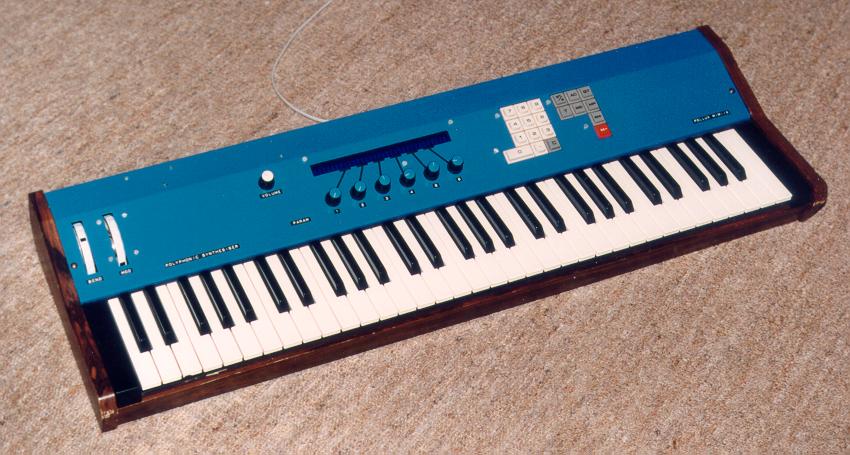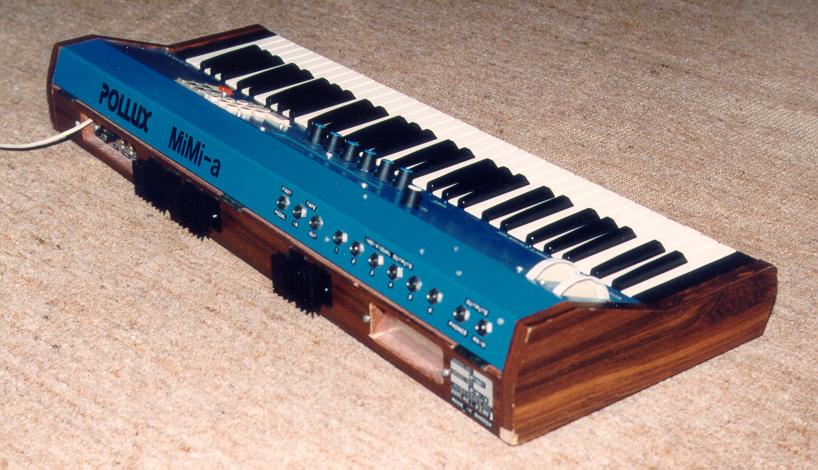
The MiMi-a Polyphonic Synthesizer

Each voice is mostly analog; all signal processing is analog, with the envelope generators and LFO's being partly digital, as well as the oscillator front-ends. This makes for a warm analog sound while at the same time retaining digital precision for the envelope and LFO timing, and oscillator frequencies.
Each voice consists of:
There are six individual outputs which may be routed to the any of the six voices. A number of key assign modes are available, as well as a sostenuto function, whereby only keys depressed are affected by the sustain pedal. A multitimbral mode (VGC mode - short for Voice Group Configuration) is also available, although for ease of use two-way split and layer modes are also directly available.
The MiMi-a is powered by a Z80B microprocessor, running overspeed at 8 MHz. Apart from play and edit modes, there's also a machine language monitor, and it's possible to download application software via MIDI. For instance, I once ported John Simonton's Pink Tunes to the MiMi-a.
The instrument is built in a Yamaha CP-10 case, with only the bottom and sides and keyboard having been kept from the original. After quite a few years in service, the original carbon-on-rubber keyboard switches started acting erratically, and were replaced by keyboard switches from a scrapped computer terminal keyboard. The name MiMi-a is an acronym for Microprocessor-controlled Musical Instrument, version a.
Check here for a closer look inside the case.
For an example of what it sounds like, check out my music page.
